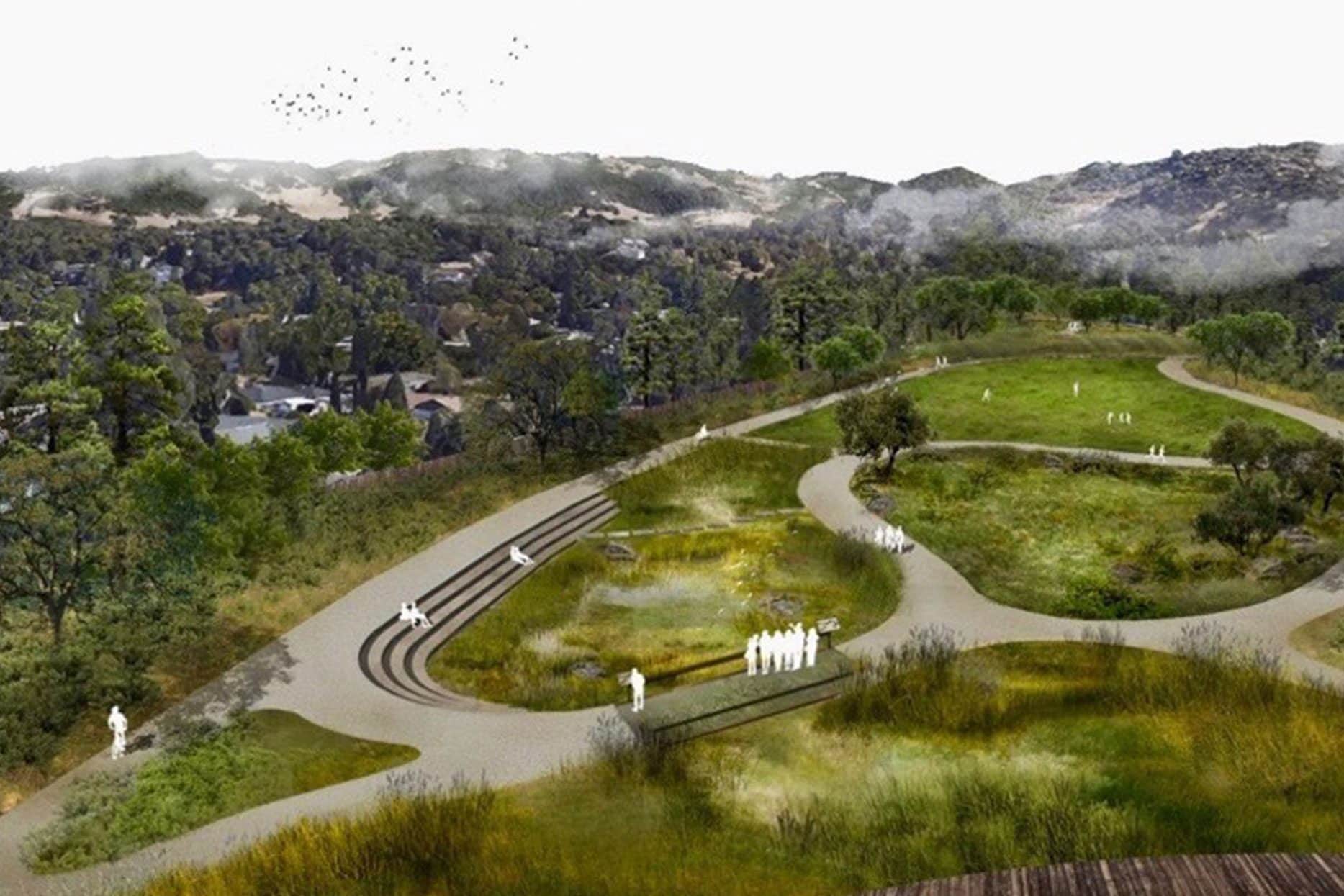Student Plans Address Replanting the Greenway for Climate Benefits
Starting with this issue, Campaign supporters will share their vision of how the future development of the Greenway presents compelling opportunities to temper our environmental impacts and take positive action to mitigate climate change. Once the Greenway is purchased, we will have an opportunity to address climate adaptation opportunities on the Greenway in a community-based park planning process. This month, Campaign Committee member Philip Frankl will share his perspective as an experienced landscape architect and educator.
Over the past several years, my colleague Katharine Anderson and I—both SE Greenway Campaign Committee members and instructors in the Department of Landscape Architecture at San Francisco’s Art Academy University—have been utilizing the Southeast Greenway site and its surroundings as a semester long focus for undergraduate and master’s degree level studio courses on regional open space planning. As part of their project work, students have been asked to consider the site and its neighborhood and regional surroundings, and then research, analyze, and develop a program that they could integrate into a successful design and masterplan.
In this short article the focus is on several site-specific ways these projects evolved, and how the Greenway can be planned and revegetated while successfully contributing to sustainability and long-term resilience for the Santa Rosa region.
To address the objective of greening the site, students first analyzed the Greenway considering both its natural and preexisting ecology, and how historic alterations by agricultural, horticultural, or structural developments such as grading, paving, fences, and buildings have impacted the property.
The challenge for the students was to reconcile the natural ecology and the anthropomorphic (i.e., human-created) changes to the site, and in this context, to imagine how we can repair and mitigate damage, address issues related to environmental pollution and climate change. and reimagine how to redevelop the site to the best advantage. Based on their learning of current best practices, the student proposals involved replanting the site with native and non-native trees, shrubs and ground cover adapted to local climate and soil conditions while considering ecological and cultural needs.
Some results and benefits that would develop as plantings mature include:
- Tempering our urban micro-climate. Our cities get hotter in the summer, especially those lacking parks, natural open spaces, and street trees. Unshaded asphalt, dark roof tops and reflective walls create a ‘heat-island effect’. With the addition of vegetation, especially trees, we can mitigate by shading pavement and letting foliage modify temperature through the process of ‘evapotranspiration’.
- Filtering both air and stormwater drainage. Many tree and shrub species are effective at absorbing and converting harmful particulate and other air pollutants and improving air quality. Many types of grass act as bio-filters to remediate water pollutants.
- Providing wildlife habitat on the Greenway and improving linkages through existing open space areas such as Spring Lake, Trione-Annadel State Park, and stream corridors that connect to other nodes such as Doyle Park, the Prince Memorial Greenway, and rural spaces beyond. Creating several interlinked environments further enhances and diversifies the Greenway enabling wildlife to thrive. In the parlance of contemporary open space planning this is referred to as ‘green infrastructure’.
- Sequestering carbon by converting carbon dioxide to oxygen through photosynthesis. Carbon sequestration is a process of capturing and storing atmospheric carbon dioxide and reducing the amount of carbon dioxide in the atmosphere. Sequestration is an essential tool for reducing global climate change.
- Improving human habitat by providing places to recreate, play and relax. Public green spaces can, when managed appropriately, provide a refuge from the rigors of our daily lives.
These are some of the ways that vegetation planting can be utilized to address environmental problems and climate change at a local, regional, and even global level. As we move forward with the purchase and development of the Southeast Greenway, our community will, over time, realize many benefits if we plan the Greenway with our climate future in mind.

